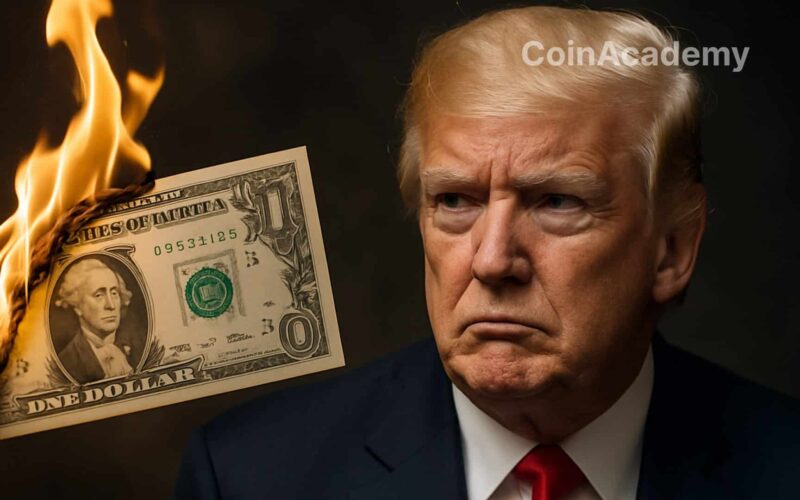Donald Trump threatens new tariffs, causing an immediate fall of the dollar to its lowest level since March 2022 against major global currencies.
The Return of Tariff Threats Shakes the Markets
Donald Trump reopens the Pandora’s Box of protectionism. By announcing the imminent sending of letters to its trade partners to set new customs duties, the former president plunges the dollar to its lowest level since March 2022.
The market’s reaction was immediate: 0.8% drop for the dollar against a basket of major currencies, including the euro and the pound. A sharp fall that surpasses the previous low point reached during the ‘tariff blitz’ last April.
The End of a 90-day Trade Truce
This is the end of the grace period. In less than two weeks, the 90-day hiatus on ‘reciprocal tariffs’ expires. Trump seems determined to reignite the trade war. ‘His comment clearly indicates a new escalation of tensions to come,’ warns Analyst Derek Halpenny from MUFG.
This atmosphere of uncertainty weighs heavily on the American currency, already weakened by other geopolitical fronts.
Iran, China, Inflation: Signals Multiply
Aside from the trade war, tensions are rising in the Middle East. Washington has authorized some of its troops to leave the region. ‘They [Iran] cannot have nuclear weapons, it’s as simple as that,’ emphasized Trump on Wednesday.
In this tense context, even good news like a temporary trade truce between China and the United States was not enough to restore confidence to investors.
And American inflation, lower than expected, paradoxically drives the point home. It strengthens the prospect of rate cuts by the Fed: two 25 basis point cuts are now fully anticipated by the markets. As a result, the dollar continues to depreciate.
Europe Gains Momentum
Meanwhile, the ECB is more cautious. It hinted that it was nearing the end of its rate-cutting cycle. Immediate result: the euro rises to $1.160, its highest level since November 2021.
This monetary strategy divergence between the two sides of the Atlantic increases the pressure on the greenback.
Foreign Capital Flight: America Worrying
In the background, another concern is gaining ground: growing foreign investors’ distrust towards US assets. Soaring debt, unstable political climate, increased threat of taxation on foreign investments… the mix is explosive.
Foreigners sell off every dollar rebound. They flee political chaos and fiscal risks.
Trevor Greetham, Director at Royal London AM
The decline of the dollar could intensify. The end of American exceptionalism reinforces the risk premium and weighs on its value.
The dollar king stumbles. And this time, it’s not just the markets saying so.




